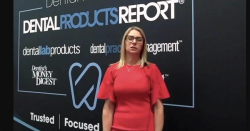- About Us
- Advertise
- Editorial
- Contact Us
- Terms and Conditions
- Privacy Policy
- Do Not Sell My Personal Information
© 2025 MJH Life Sciences™ and Dental Products Report. All rights reserved.
Simplifying Equipment Service, Purchase, and Compliance
UptimeHealth helps dental practices manage equipment and analyze efficiency and maintenance to ensure everything runs smoothly.
When important equipment breaks, the last thing you need during your busy day is to have to help an assistant look for the product information, rifle through business cards to find who fixes that particular device, schedule the technician, and then keep track of when they’re coming and whether they actually show up, and know where to file the information about the repair for next time. It’s exhausting just thinking about it.
You and your staff should not have to be equipment or inventory experts. But keeping all your devices in working order is key to providing the best care to your patients and getting your best return on investment. I spoke with CEO and cofounder of UptimeHealth, Jinesh Patel, to find out about his strategy to simplifying and predicting dental equipment service, purchase, and compliance.
Lou Shuman (LS): How did you get the idea for UptimeHealth?
Jinesh Patel (JP):I have a master’s degree in biomedical engineering and an MBA, so I enjoy working on device design as well as equipment management and processes. Early on, I got a job as a clinical engineering manager for the largest health system in Austin, Texas. This involved taking care of the equipment inside our huge health care system, developing a strategic maintenance plan, keeping track of vendors, monitoring cost-effectiveness, and working with the departments to inform their purchase decisions. I came to understand what compliance means for the environment of care in the medical world and how a broken device impacts the day-to-day operations.
In 2013, when our health system started acquiring urgent care outpatient locations, I was tasked with evaluating their equipment management policies and compliance. When I started interviewing them, I realized they had no solutions; some could not even show me a device list or management plan for their equipment. These are items required by regulatory bodies in the medical world.
I was surprised that in most of these cases, there was no equipment expert in the building. Yet every medical procedure requires some kind of medical instrument. That was my inspiration to create UptimeHealth. I was serendipitous enough to meet cofounder Bill Olsen, a software expert who formerly was chief technology officer of Accruent, the premier equipment and asset management platform for health care systems. He saw the same problems I was seeing. At first, we were hyper-focused on the urgent care and surgical markets,but in March 2020, during the COVID-19 crisis, we started to look at other markets that could be helped by UptimeHealth and decided to serve the niche of over 120,000 dental offices in the US.
LS: How can UptimeHealth help offices?
JP: First we help dental offices manage their equipment efficiently by creating a roster of what they actually own, a comprehensive list—category, model, serial number, location in the building, who is managing the device at that building, the date of purchase, and purchase price. We make all these data points searchable. So there is, for example, a list of all the autoclaves in the office, all the chairs, everything. Based on that roster, we indicate any upkeep or maintenance that is needed for that equipment—on a daily, weekly, monthly, quarterly, annual basis, and whether it’s compliance related.
A good example is testing sterilizers or clean-outs for chairs that need either to be maintained or comply with applicable laws. A task management engine flags the tasks that need to be done and then stores the maintenance record for each device in a digital binder. Also, we keep a record of your service technician so in case of an issue, you’re not searching for business cards or emails for your contact. With UptimeHealth, you can click a button and send a message to that technician telling them about your problem, along with all the pertinent information on that device, and an office contact for more information. We then track their service progress. You can look across the systems and see if the service call is scheduled, if parts are on order, and when it’s complete. Anyone in the office can log in to the product and see the status of a piece of equipment.
Lastly, we analyze data about your equipment—how often it’s failing and how much it costs to service and support those devices. We can produce depreciation reports and suggest when it may make sense to replace instead of repair equipment.
In addition to our original services, customers have requested other applications, like facilities management. We already have a concept of your space because we assigned the devices to their places in the building. So just like you open up a service ticket on a device, you can open up a service ticket on an area, such as an operatory where a ceiling tile has fallen or a plumbing issue.
LS: What does the future hold?
JP: We are in the process of developing a sophisticated version of the equipment roster to store documents for your office, and in the future we are envisioning that eventually our product will communicate with the equipment, like a machine will send a message when it may be overheating, and that will create a task or a service ticket.

 Download Issue: Dental Products Report October 2023
Download Issue: Dental Products Report October 2023

